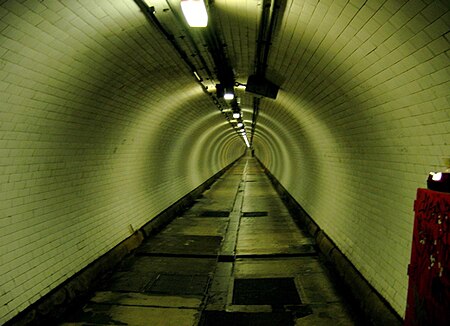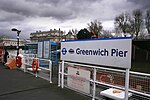Greenwich foot tunnel
Buildings and structures in the London Borough of Tower HamletsBuildings and structures in the Royal Borough of GreenwichFootpaths in LondonGrade II listed buildings in the Royal Borough of GreenwichPages containing links to subscription-only content ... and 8 more
Pedestrian tunnels in the United KingdomTourist attractions in the London Borough of Tower HamletsTourist attractions in the Royal Borough of GreenwichTransport in the London Borough of Tower HamletsTransport in the Royal Borough of GreenwichTunnels completed in 1902Tunnels underneath the River ThamesUse British English from May 2017

The Greenwich Foot Tunnel crosses beneath the River Thames in East London, linking Greenwich (Royal Borough of Greenwich) on the south bank with Millwall (London Borough of Tower Hamlets) on the north. Approximately 4,000 people use the tunnel each day. It opened in 1902.
Excerpt from the Wikipedia article Greenwich foot tunnel (License: CC BY-SA 3.0, Authors, Images).Greenwich foot tunnel
Greenwich Foot Tunnel, London East Greenwich (Royal Borough of Greenwich)
Geographical coordinates (GPS) Address Nearby Places Show on map
Geographical coordinates (GPS)
| Latitude | Longitude |
|---|---|
| N 51.4833 ° | E -0.0102 ° |
Address
Southern Foot Tunnel Entrance
Greenwich Foot Tunnel
SE10 9HT London, East Greenwich (Royal Borough of Greenwich)
England, United Kingdom
Open on Google Maps










